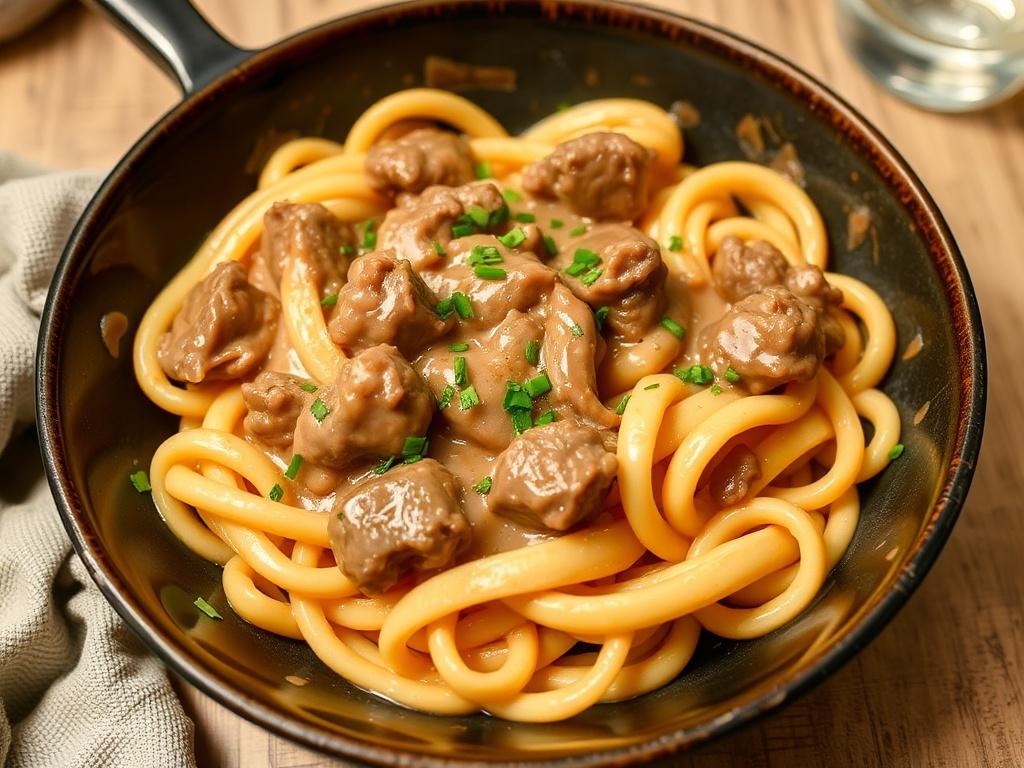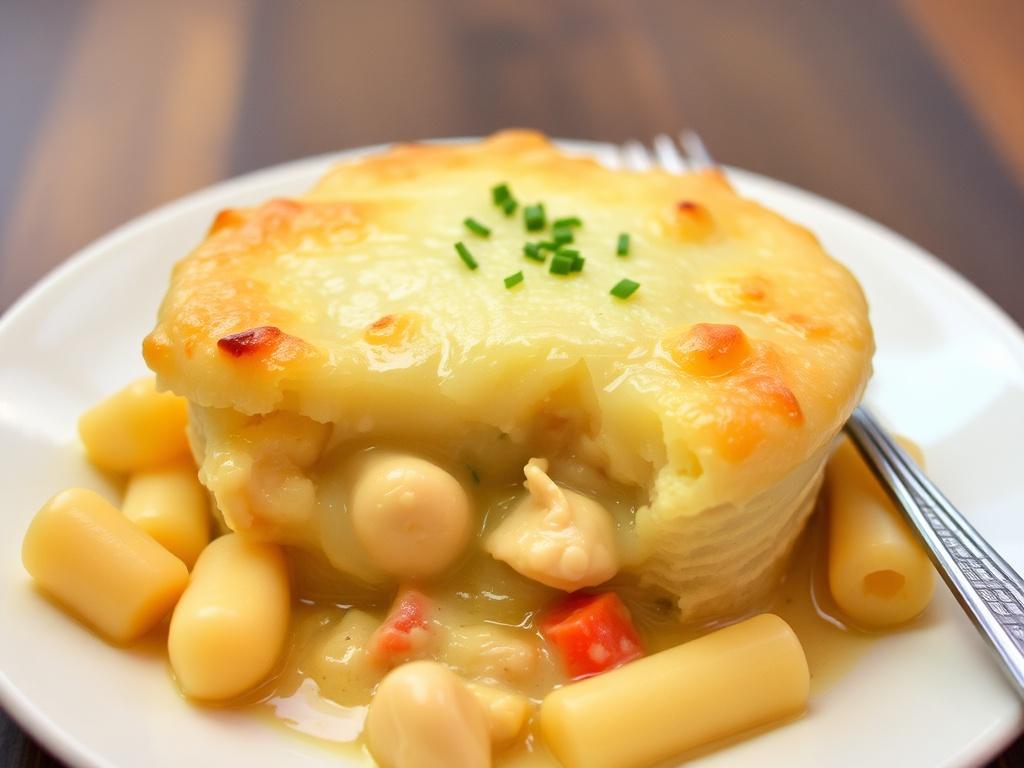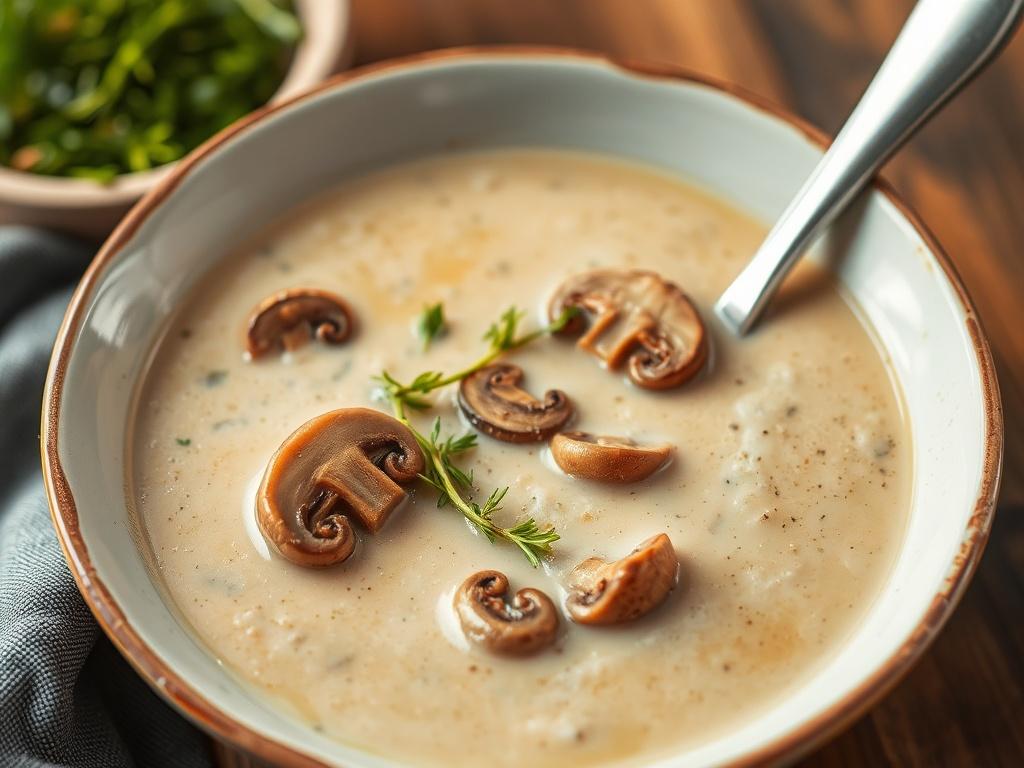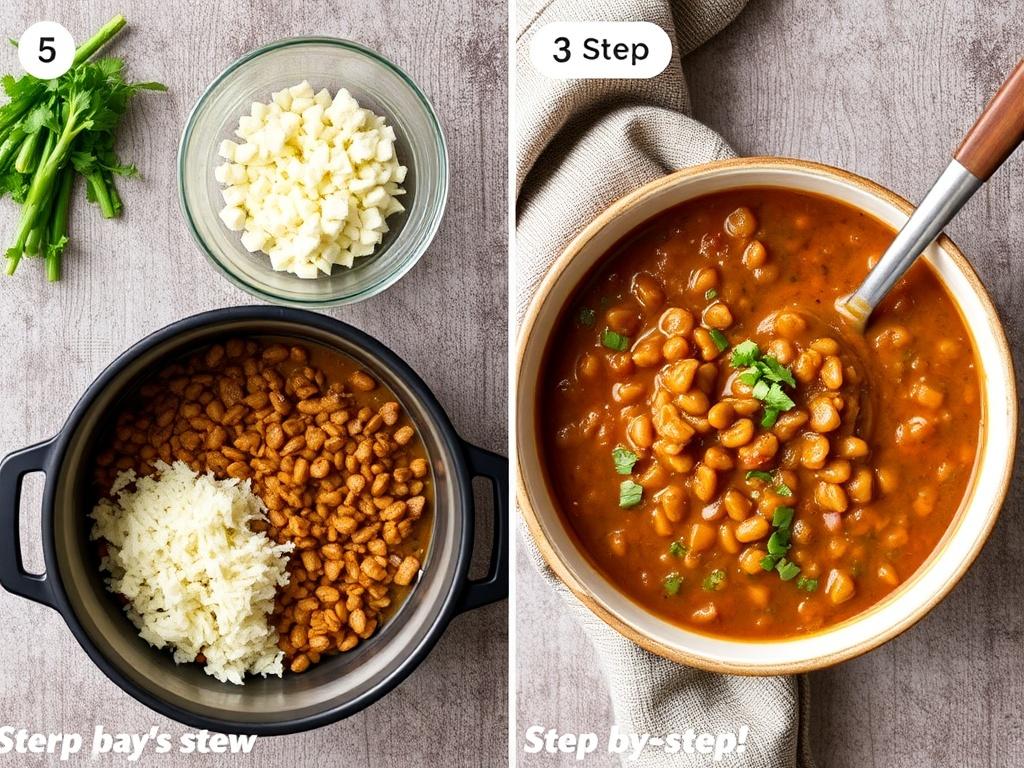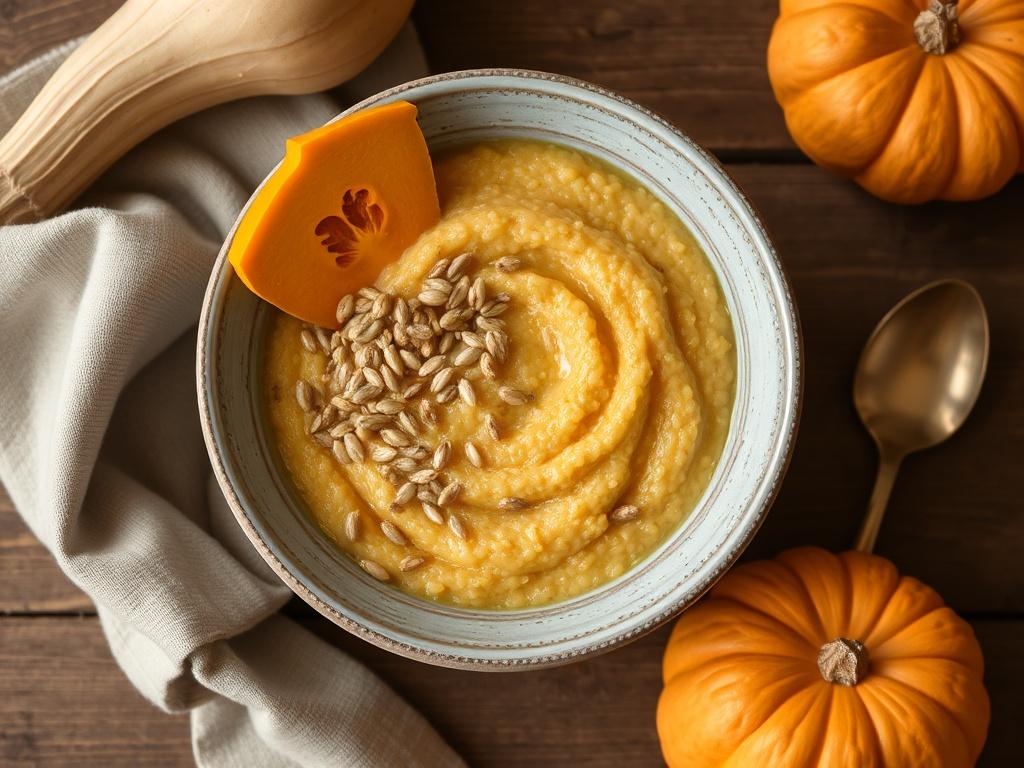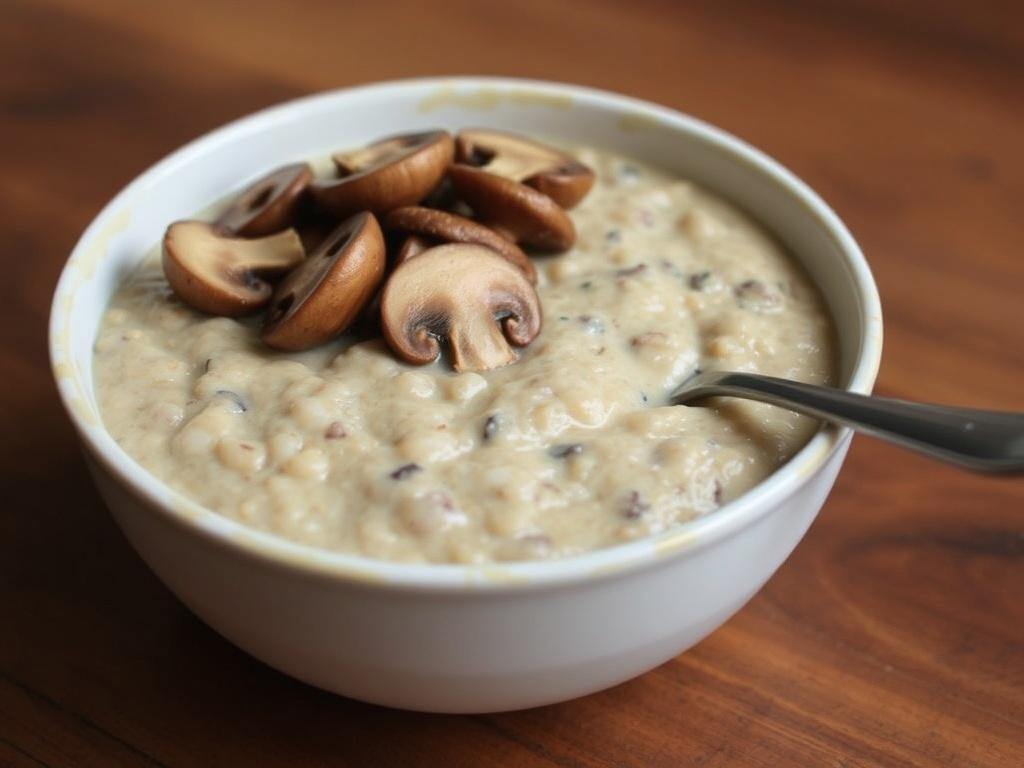One-Pot Comfort: Slow Cooker Sausage Casserole That Feeds a Crowd
This dish is pure kitchen diplomacy: it solves weekday dinnertime skirmishes and wins over picky guests without drama. A Slow Cooker Sausage Casserole is the kind of meal that smells like home the second it begins to bubble, while you get on with your day. It requires modest hands-on time, and the slow cooker does the heavy lifting — melding meat, vegetables, and sauce into a thick, spoonable comfort food. In this article I’ll walk you through ingredients, technique, sensible substitutions, and a few small tricks that make the difference between a good casserole and a memorable one. Expect practical tips, personal notes from my kitchen experiments, and a few serving ideas so you never stare blankly at the fridge again.
Why choose a slow cooker for sausage casseroles?
Using a slow cooker for a sausage-based casserole makes seasonal sense: it’s forgiving, efficient, and the low heat encourages flavors to marry rather than clash. Sausage has a lot of natural fat and seasoning; when cooked slowly it releases those oils into the sauce, deepening the profile without any sharp edges. A slow cooker also rescues busy evenings — toss the browned meat and prepped veg in before you leave and come home to a finished dish. For families, it’s a way to stretch ingredients: root vegetables and beans bulk up the casserole, turning a few links into a full tray of dinner. Finally, the appliance prevents overcooking of delicate components that might dry out in an oven, especially when you include starchy elements like potatoes or pasta.
There’s also a practical side to this method: temperature stability. Once the unit reaches cooking heat, it stays steady, which reduces the need to babysit the pot or adjust vanshingly small variables. That stability is a boon when layering ingredients that need different cook times — vegetables soften evenly while the sausage settles into its warm, savory groove. Because most slow cookers are sealed, moisture doesn’t escape quickly, preserving texture and preventing the sauce from reducing too fast. This means you can plan for a thicker, stew-like casserole or a saucier one simply by adjusting the amount of liquid at the start.
Ingredients and flavor building: assembling the essentials
The backbone of any great casserole is ingredient choice. For a sausage casserole, pick sausages that match the flavor direction you want: sweet Italian for a tomato-forward version, spicy chorizo for a smoky kick, or good-quality breakfast sausage for a homier, herb-driven dish. Fresh vegetables anchor the dish — onions, carrots, and bell peppers are classic; root vegetables like parsnips and potatoes add heartiness. Acidic elements such as canned tomatoes or a splash of wine cut through the richness, while herbs and aromatics round the profile. Finally, texture boosters like canned beans, pearl barley, or short pasta make a single pot feel like a banquet.
Below is a simple ingredient table for a family-sized casserole (about 6 servings). Use it as a baseline and scale up or down as needed. If you prefer a vegetarian partner for the meat, think in terms of the same volume of mushrooms or smoked tofu. The table lists common pantry and market items that play well together.
| Ingredient | Amount (approx.) | Notes |
|---|---|---|
| Raw sausages (links or removed from casing) | 1.2–1.5 lb (550–700 g) | Italian, pork, or chicken — choose by flavor |
| Onion | 1 large | Yellow or sweet, diced |
| Carrots | 2–3 medium | Sliced or chopped |
| Bell pepper | 1 large | Any color, diced |
| Canned tomatoes (crushed or diced) | 14–28 oz (400–800 g) | One standard can for a thicker casserole |
| Liquid (broth or wine) | 1/2–1 cup | Less for thicker sauce, more for stew |
| Beans or pasta | 1 can or 1–2 cups cooked | Optional; adds body and protein |
| Herbs & spices | To taste | Bay leaf, thyme, smoked paprika, salt, pepper |
Choosing sausage: what matters
When selecting sausage, flavor intensity and fat content matter most. A very lean sausage will cook faster and won’t contribute as much body to the sauce, while an overly fatty link can make the casserole greasy unless skimmed. I like sausages with a moderate amount of fat and clear seasoning — fennel and garlic in Italian links, smoked paprika in Spanish-style chorizo, or herbed chicken sausages for a lighter touch. If the sausage casing is tough or inedible, remove it and crumble the meat before browning; this creates more surface area for caramelization and helps integrate the protein into the casserole.
Step-by-step method: from prep to table
Good technique isn’t complicated, but a few purposeful steps lift the result. Start by browning the sausage — that Maillard reaction produces deep, savory characters that a slow cooker alone doesn’t always create. Sauté the aromatics next to coax out sweetness from onions and peppers. Deglaze the pan with a splash of broth or wine to loosen flavorful browned bits, then combine everything in the slow cooker with tomatoes, herbs, and any sturdy vegetables. Cook low and slow until vegetables are tender and the sauce has thickened to your liking.
Here’s a clear, practical sequence to follow. I recommend writing it on a sticky note when you begin; it’s easy to forget small, meaningful steps when you’re juggling family and work. Feel free to tweak times based on your slow cooker model; older or smaller units can run hotter, so monitor the first time you try a new recipe in a different pot.
- Brown sausage over medium-high heat, then remove and drain slightly.
- Sauté onion, carrot, and pepper until softened and slightly caramelized.
- Deglaze pan with broth or wine, scraping browned bits, then add tomatoes and seasonings.
- Transfer mixture to slow cooker, nestle in sausage, and add any root veg or beans.
- Cook on low for 6–8 hours or on high for 3–4 hours until everything is tender.
Browning and why it matters
Skipping the browning step is tempting when short on time, but it’s one of those shortcuts that costs you flavor. Browning changes the chemistry of the meat and creates caramelized crusts that melt into the sauce — those browned bits are umami gold. I recommend doing this in batches so the pan doesn’t steam the sausages; overcrowding lowers temperature and prevents Maillard coloring. After browning, reserve any rendered fat if it’s flavorful; a tablespoon or two added back to the slow cooker enhances mouthfeel and ties the sauce together.
One trick I use is to brown half the sausages and remove them, then crumble the remainder in the pan so you get both chunky and fine textures in the final bake. That contrast makes the casserole feel homey but not sloppy. If you’re short on time, you can also use a hot oven or skillet to get a fast turn on browning; the key is high heat and attention rather than long cooking time.
Vegetable prep and layering
Vegetables should be cut to even sizes for uniform cooking. Dense items like potatoes or parsnips can be diced smaller, while mushrooms and bell peppers can be chunkier since they soften quickly. Layering matters in a slow cooker: put root vegetables toward the bottom because they take longer to become tender, and place quicker-cooking ingredients on top. If you’re adding pasta, wait until the final hour to avoid overcooking; if you prefer a one-pot approach with rice, parboil the rice slightly first.
Another practical note: canned beans are forgiving and integrate beautifully into a casserole. If you prefer dried beans, soak and par-cook them before adding, because raw dried beans can remain mealy and even contain traces of toxins if undercooked. For greens like spinach or kale, stir them in during the last 15–30 minutes so they wilt but retain texture and colour. Small timing adjustments save a lot of regret at dinner time.
Variations and substitutions: tailor it to mood and pantry
The beauty of a sausage casserole is how adaptable it is. Swap tomatoes and Italian sausage for chorizo and smoked paprika to create a Spanish-leaning bake, or use a creamy base with mustard and cream for a Northern European vibe. If you want vegetarian, replace sausage with smoked tempeh or a mix of mushrooms and white beans, and add a splash of liquid smoke for depth. The slow cooker is forgiving enough to handle most substitutions, but keep an eye on moisture: ingredients that release a lot of liquid, like tomatoes or thawed frozen veg, will change the sauce’s density.
- Tomato-based: Italian sausage, canned tomatoes, oregano, basil.
- Creamy version: chicken sausage, cream or crème fraîche, mustard, thyme.
- Smoky chorizo: Spanish chorizo, smoked paprika, red peppers, white beans.
- Vegetarian: smoked tofu or mushrooms, white beans, vegetable broth, rosemary.
Another substitution I often use is replacing part of the meat with lentils or barley to stretch the meal when feeding a crowd or saving on cost. Lentils add earthiness and body while keeping protein levels respectable; barley lends chew and hoovers up sauce nicely. When you introduce grains or legumes, reduce liquid slightly or extend cooking time so the casserole doesn’t end up soupy. These are small tweaks that keep the casserole interesting week after week.
Serving suggestions and accompaniments
A robust sausage casserole pairs well with simple, fresh side dishes that provide contrast. A crisp green salad, dressed with a bright vinaigrette, cuts through the richness. Crusty bread or garlic-rubbed slices are essential for sopping up remaining sauce, and a dollop of yogurt or crème fraîche on the finished plate adds pleasant acidity and coolness. For a more substantial meal, serve with creamy mashed potatoes or buttered egg noodles that soak up the casserole juices.
For a casual family dinner, I often place the slow cooker on the table and let everyone serve themselves, with bowls of grated cheese, chopped parsley, and pickled chillies on the side for customization. This communal approach turns a simple meal into a small event, and kids usually enjoy assembling their own plates. If you’re hosting, consider finishing the casserole under a hot broiler for five minutes with a cheese topping to create a browned crust that looks special without extra effort.
Make-ahead, storage, and reheating
One of the practical virtues of this dish is its make-ahead friendliness. The casserole can be made a day in advance and refrigerated; flavors often deepen overnight. When storing, cool the casserole to room temperature and then transfer to airtight containers. Refrigerate for up to four days or freeze portions for up to three months. Labeling with the date saves confusion when your freezer becomes a time capsule of dinners.
Reheating is simple: thaw in the fridge overnight if frozen, then reheat gently on the stovetop or in the slow cooker on low until warmed through. If using a microwave, stir halfway through heating to avoid cold spots, especially if the dish includes dense root vegetables. Add a splash of broth when reheating if the sauce has tightened or seems dry. Reheated casserole rarely tastes identical to fresh, but its comfort factor remains intact.
Troubleshooting common issues
Even with a forgiving method, a few things can go sideways. If the casserole is watery, it likely needed less liquid at the start or more time to cook uncovered to reduce. Remove the lid for the last 30–60 minutes to concentrate the sauce, or stir in a slurry of flour or cornstarch mixed with cold water. If ingredients are undercooked, check your slow cooker’s temperature setting; older units sometimes run cool. Cook longer on low rather than increasing to high, as higher heat can dry out components unevenly.
If the casserole tastes flat, it needs brightness and seasoning. A generous pinch of salt, a squeeze of lemon, or a splash of vinegar can wake a heavy stew instantly. Fresh herbs added at the end preserve vibrancy better than those cooked for hours. For overly salty results, dilute with more vegetables, a peeled potato to absorb salt (remove before serving), or an unsalted starch like cooked rice or pasta.
Nutrition notes and ways to lighten up
Sausage dishes are often indulgent, but you can make this casserole lighter without sacrificing satisfaction. Choose leaner sausage options, remove visible fat after browning, and bulk the dish with vegetables and legumes. Swap some or all of the sausage for chicken sausage or turkey sausage to reduce saturated fat. Incorporating lots of tomatoes, peppers, and greens increases fiber and vitamins while keeping the calorie count reasonable.
If you’re watching sodium, use low-sodium broth and no-salt-added canned tomatoes, seasoning carefully at the end. Adding acid in the form of lemon or vinegar often allows you to use less salt while maintaining perceived flavor. For a lighter finish, skip heavy creams in favor of a dollop of Greek yogurt stirred in off-heat, which gives creaminess without overwhelming richness.
My favorite tweaks and kitchen stories
I remember the first time I fully trusted the slow cooker with a sausage casserole: I tossed everything together before a long workday, convinced I would come home to a disappointing soggy mess. Instead, the house smelled like a rustic kitchen in eighties cinema, and the sauce had a mellow, sophisticated tang I didn’t expect. Since then I’ve learned to embrace small variations. Adding a tablespoon of tomato paste while sautéing makes the sauce deeper; a splash of balsamic vinegar at the end brightens the whole pot.
One of my go-to hacks for feeding sudden guests is to double the recipe, freeze half, and serve the fresh portion with a simple cucumber salad. The frozen half has rescued more than one hectic weekend; defrosted and reheated, it develops a rustic firmness that’s perfect with crusted bread. If you enjoy experimentation, try a wedge of sharp cheese grated on top during the final ten minutes and then briefly broiled — it makes a modest casserole feel celebratory.
Final serving ideas and a gentle nudge to try it

A Slow Cooker Sausage Casserole is more than a recipe; it’s a template. It teaches you how to balance richness with acidity, comfort with freshness, and time with technique. Start with the simple version and vary one element at a time — swap the sausage type, change the beans, or add a new herb — and each week you’ll discover a different face of the same dependable dish. Invite friends or family, set out condiments, and enjoy the pleasant ritual of ladling from a warm pot at the center of the table.
Try this approach next time you need a meal that’s low in fuss but high in satisfaction. With modest prep and a patient slow cooker, you’ll produce a filling, flavorful casserole that becomes an easy favorite. And if you find a unique twist that wins over your table, tuck it into your mental cookbook — these are the recipes that get repeated, improved, and eventually loved by everyone who sits down to eat.

